The CBD Expert Series: Certificates of Analysis 101 with Dustin Jones
CBD oil exists in an unregulated industry—it's a scary truth buyers must come to terms with. Because the laws around cannabidiol (CBD) are still being hashed out on the state and federal levels, there's a lot of gray area when it comes to knowing what's okay, and even safe, to include in CBD products. Ultimately, it's been up to CBD companies to define regulations within the industry. And those putting people before profit have subscribed to the standard of producing up-to-date Certificates of Analysis (COAs) for each batch of CBD product.
But why should you care about Certificates of Analysis? And what is a Certificate of Analysis anyways?
We sat down with Dustin Jones of Absolute Nature CBD, a Dallas, Texas-based CBD company that produces full-spectrum CBD oil products, to get the answer. Wasting money on an ineffective product is one thing; consuming dangerous chemicals and heavy metals is another—protect your wallet and your health with a better understanding of COAs.
Nick Musica (CBD Oil Review): Tell us about Absolute Nature CBD’s mission and philosophy.
Dustin Jones (Absolute Nature CBD): Our mission is simple: Provide only the best 100% natural, CBD products to enhance the quality of life for our family, friends and customers. We feel that in this current “wild west” that the CBD industry has become, everyone deserves the right to have access to clean, quality, safe, and honest CBD products. No hiding behind jargon, hiding ingredients, or use of potentially harmful ingredients. Only open and transparent, publicly published, independently reported COAs.
Our ethos is to always provide all natural, ecologically friendly, clean, and accurately labeled CBD products to everyone. We're committed to leading the way in business standards and our beliefs are that batch-specific COAs should be a standard across the board.
What is a Certificate of Analysis?
A Certificate Of Analysis, also known as a third-party or independent lab report, is a document that details the breakdown, composition, and compounds found in CBD product samples sent for analysis to an independent and certified cannabis testing laboratory. It can be as simple as just containing a potency profile or go as deep as showing ppb (parts per billion) values of pesticides, solvents, and other contaminants.
What types of tests are included in a COA?
The types of tests you should look for are:
- Cannabinoid content and potency.
- This report will show how much CBD and other cannabinoids are present per milliliter (ml) of product. CBD content should match the advertised ml/dose or full-bottle value which can have a 10% variance, which is deemed acceptable by most. For example, a 1000mg CBD product should contain 1000mg of CBD. If full-spectrum, it should contain 1000mg of CBD plus the other cannabinoids—800mg of CBD and 200mg of other cannabinoids would not be acceptable. The same is true for broad-spectrum, where THC content should always 0.3% or less as defined by federal law.
- Terpene profile.
- If a company advertises specific terpenes in their products, they should be tested for and validated.
- Pesticide testing.
- This should be a comprehensive list of pesticides and ideally, they should all be reported as PASS, 0, ND, or 10x lower than the upper limit allowed.
- Solvent testing.
- This should be a comprehensive list of solvents and the should ideally be reported as PASS, 0, ND or 10x lower than the upper limit allowed.
- Heavy metals.
- The most common metals tested for are lead, mercury, arsenic, and cadmium. You don't want any heavy metals in your CBD products.
- Microbiological.
- Aerobic Bacteria, Coliform Bacteria, Bile-tolerant gram-negative bacteria, yeast, and molds are most commonly tested. Like heavy metals, you do not want any of these in your CBD.
In some cases, you may see very trace amounts of one pesticide or solvent, as long as that doesn't get anywhere near the upper limit, it's good. However, if you get a small result in every tested compound in each section, something is clearly not right. For example: If a product shows a small result for 20 solvents, you have to ask, how did all those trace contaminants get there and what else is present that isn't tested for?
Do all CBD companies perform all these tests?
Testing for potency is an obvious one, but a lot of companies are not even doing this. Which is not only outrageous, but incompetent or purposely avoided due to the product being fake or containing little to no cannabinoids whatsoever.
Absolute Nature doesn't take this responsibility lightly and takes this a step further, testing for not only potency and cannabinoid profile, but heavy metals, pesticides, microbiological contaminants, and volatile solvents. We absolutely don’t cut corners or take risks when it comes to our product quality, consistency, and customers' health.
If your customer is putting your product into their body, you better know exactly what is in it and they must too. Relying on trust and promises is not adequate, especially in this industry right now.
Is this absolutely necessary? We think so and we think it should be mandatory too! If your customer is putting your product into their body, you better know exactly what is in it and they must too. Relying on trust and promises is not adequate, especially in this industry right now.
However, we don’t publicly declare terpenes, as we make no promises to our terpene levels and don’t advertise any specific terpenes. Why not? Doing so would require us to start adding in terpenes to guarantee a certain profile. We do not remove or add any compounds, and terpenes vary with every plant, even under strict growing conditions. We don’t see any benefit adding in isolated vegetable terpenes just for the sake of marketing.
COAs can be a little technical. How can a first-time buyer of CBD read a COA?
We attached an image showing at a quick glance what to look for. The image below shows the main areas to validate the products cannabinoid profile and content.
Certificate ID # – This is the lab's ID number for the records of that report. This is used to verify with the lab that the report is real and untampered with.
End Product Name – This should match the product you’re planning to purchase. It should not be a base oil, crude, or distillate sample. It must pertain to the actual end product.
Lot/Batch Number – This will be the end product's batch number. It's used to verify the batch you have matches the advertised claims and contents.
Vendor Details – This should be the name of the company that produces or sells the branded product. If the vendor details do not match the brand on the CBD product, it’s likely invalid.
Product/ Sample Photo – This one isn't essential, but really great to have. It shows the actual product the lab tested and a sample taken from said product.
Weight % – Shows the weight of each compound tested by % of total volume, which is most important when looking at the THC value—ensure it’s 0.3% or less.
Conc – Concentration in milligrams (mg) per ml. Used to verify the advertised CBD content is correct.
Content of CBD per ML – Take that number and multiply it by the volume of the bottle, in this case, 30 ml. With this, you will get a CBD content of 1,002 mg. Make sure it’s CBD total, and not total cannabinoids.
Understanding the above basics will, in most cases stop you from falling prey to fakes, low-quality, mislabeled garbage. If you can't validate the above as a minimum for the product you wish to purchase, walk away.
What do all the acronyms like ND and LOQ, mean?
There are a few terms and acronyms that require understanding in order to understand how to read a report:
- NT (Not Tested) – Meaning the compound is listed by the lab as testable, but the CBD producer hasn't requested testing.
- ND (Not Detected) – This means the compound tested did not trigger a positive result. However, a positive result requires the compound to be detected above the set LOQ/LOD.
- LOQ (Limit of Quantitation) – LOQ is the lowest concentration at which the analyte can not only be reliably detected, but at which some predefined goals for bias and imprecision are met.
- LOD (Limit of Detection) – The smallest concentration of a measurand that can be reliably measured by an analytical procedure. Predefined limits can be set by the lab according to their state regulations for said compound.
- LLD (Lower Limit of Detection) – Predefined limits can be set by the lab according to their state regulations for said compound.
- PPB (Parts Per Billion) – How many parts per billion have been detected.
- PPM (Parts Per Million) – How many parts per million have been detected.
- UG/KG – Concentrations of compounds or chemicals measured in units of the mass of chemical (milligrams, mg or micrograms, ug) per mass (kilogram, kg). This is written as mg/kg or ug/kg.
- CFU/g (Colony-Forming Units per gram) – Used to measure the amount of live bacteria, microbes, or fungal cells present in the sample.
The LOQ/LOD/LLD should be declared next to each compound test result, or above or below the corresponding contaminant section.

The lab testing CBD samples should always disclose lower limit of detection (LOD), or the LOQ or LLD, when reporting on contaminants so the buyers know the maximum amount of the compound that could be present and still reported as “ND.”
This becomes particularly important for people looking for THC-“Free” CBD products. It’s currently legal to label “THC-free” if the product contains the legal limit of 0.3% or less THC. You bet your bottom dollar this happens a lot!
More so, you’ll hear people saying “isolate is THC-free, just buy that, you’ll be good.” Now, in a regulated and perfect world, that may be true, however, right now, that’s not true at all. This is where understanding what ND means on the product you're planning to buy is important.
An isolate may show “ND” as a result for THC, however, the LOQ/LOD/LLD could be set as high as 0.099%. This would mean you cannot guarantee it is in fact THC free; if there's 0.098% THC, the report would still read “ND” because of the set LOQ/LOD/LLD. To verify a product is in fact THC-free, you want the report to show the result in percentage form to a value of at least two digits from the decimal point, of 0.00% THC.
What should the minimum testing be for different types of CBD products?
The minimum testing for:
- Ingestible products (edibles, CBD oil drops, CBD tinctures) should be full, batch-specific lab reports detailing potency for all expected or advertised cannabinoids, heavy metals, solvents, pesticides, molds, yeast, and bacteria.
- Topicals should be potency and other claimed compounds. As long as companies have pre-process reporting, which fully tests their raw material or distillate for contaminants.
- Inhalants (e.g. CBD vapes, flower) should be tested for potency, pesticides, molds, microbes, bacteria, heavy metals, and solvents (solvents can be omitted for flower). These should always be end-product and batch-specific, as this will pick up if contaminants are present in any added ingredients like propylene glycol (PG) or vegetable glycerin (VG).
Publishing the raw, base oil, or distillate tests and not carrying out batch-specific end product testing on products that are inhaled or ingested is a common deception, and cost saving exercise used by many companies. This practice is simply margin saving and isn't sufficient to prove the end product is sound. How do they know the carrier oil they purchased isn’t tainted and heavily contaminated? Truth is, they don’t and worst of all, they don’t care enough to check and prove it to their customers.
Why should consumers use CBD products that are tested?
Within this market, it is no surprise that some CBD products not only contain less CBD than advertised but also have failed important safety concerns such as high amounts of heavy metals, solvents, pesticides, or extremely dangerous synthetics. COAs ensure the consumer they are buying correctly labelled and safe product.
Why are there so many potential contaminants in CBD/cannabis/hemp products you ask? Let’s start with the Cannabis plant itself.
Cannabis is known as a phytoremediator, also known as a “super plant” or hyper-accumulator, that performs a process called bioremediation. In short, cannabis will suck everything from the soil, air, and rain with an almost unique efficiency. So efficient in fact, hemp is used to reduce, degrade, or remove toxic residue from the soil in heavily polluted areas of the world.

A diagram of a phytoremediator, like hemp, in action. Image courtesy of Rhizospheric Plant-Microbe Interactions: Key Factors to Soil Fertility and Plant Nutrition on ResearchGate.
Add in human error, unclean facilities, improper cleaning of machinery, and purposeful inclusion of substances contaminating the product during processing, and you can see why testing is so important.
Certificates of Analysis are the only line of defense to ascertain whether the product is what it’s advertised to be. Is it full-spectrum, broad-spectrum, or isolate? Mislabelling as a means to sell products at higher margins happens more often than not, currently. Isolate is often labeled and sold as full- or broad- spectrum, sometimes with legitimate lab reports showing it to be isolate. Some are not even trying to hide their deception at all. Some are relying on the lack of education or confusion around reading reports.
Can you break down full-spectrum, broad-spectrum, and isolate?
- Full-spectrum CBD products should contain multiple cannabinoids, including trace amounts of THC (0.3% or less).
- Broad-spectrum should be as above, but without THC.
- Isolate should be nothing more than CBD.
How can buyers verify their products were tested by a trustworthy lab?
It is important to make sure the lab is reputable, accredited, and state-approved. State regulations and rules do differ slightly.
The most important accreditations to look for is ISO/IEC 17025—you can usually find this on the lab’s website by searching for their accreditation info. This is an accreditation towards being technically proficient and able to produce precise and accurate test and calibration data. Look to see if the lab is able to test for cannabinoids, heavy metals, residual solvents, bacteria, and mold.
Avoid any company that tests their own product in house or republishes their own version of a report. There is no reason to take a valid independent report and repopulate the data on an in-house report for publishing, other than hiding something. In-house reporting can be inherently inaccurate as there will be no regulation on the accuracy or calibration of testing processes used.
The reason you want a third-party report is so you can have an outside and unaffiliated source to verify the stated claims.
Avoid any company that tests their own product in house or republishes their own version of a report.
How can buyers tell if a COA is legit?
Having access to batch-specific end product reports from an accredited independent lab allows you to do one final check, which is calling the lab and submitting the batch and test number to verify it is a real and un-tampered report. Report tampering in any form is deemed as fraud and in many states can land you legal trouble.
Report tampering can be anything from replacing a brand name or logo for your own, editing the results in any way (e.g. cropping sections out, changing values, batch numbers, product name, etc), or claiming other brands' lab reports as your own.
This is more common than you would care to imagine. This is why validating reports is crucial. If in doubt, contact the lab directly to verify the report is correct.
What is the current state of regulations around CBD?
Unfortunately, where product is concerned, there are no regulations. Companies can and some do, take hemp seed oil, rebadge it, mark it up 500% and off they go! Therefore, never buy from a company who does not publish correct reports.
However, there are some regulations pertaining to labelling that can lead to companies being sued for labeling fraud if a state wants to pursue them.
It is up to us and other leading companies to lead by example and show legislators the steps needed to ensure a safe product. Absolute Nature is under no legal obligation to show potency or contaminant tests. We do it to set a standard within the industry and ensure what we sell is clean, safe, and correctly labeled.
How does someone choose a quality CBD brand?
The brand's willingness to educate and be as transparent as possible. Lab reports produced by a third party are really the only weapon the consumer can use to separate truth from marketing. Look at the brand's willingness to publicly post COAs instead of asking for the consumer to request.
Where can a buyer find a company’s COAs?
Certificates of Analysis should always be uploaded on the website and made available to the public on the product page, or in a repository that’s linked to from the product page.
Lab reports produced by a third party are really the only weapon the consumer can use to separate truth from marketing.
If the product has QR codes, scan it and it should take you to the report or to a location of the report. If you are at a retail CBD store, ask for lab results if a QR code is not printed on the packaging. If there's no lab report, we highly recommend you pass on that brand until you can verify it’s contents.
We publish our latest batch reports on each product page and have a website section just for reports.
What is the one thing you wish readers take away from our chat about COAs?
That we have helped to teach readers how to understand the basics of report reading. That they are now better armed to tackle the minefield that is CBD and know what they're buying and putting in their bodies.
To use COAs is not a luxury, it's an absolute must. They should be standard across the board and publicly available for everyone. Third-party Certificates of Analysis are the last line of defense on the consumer end to hold the supplier accountable for the advertised product. COAs are the consumers best friend! We hope that through this short education piece we have equipped not only the new supporters of CBD, but also taught someone who has been in the CBD market for a long time.
More Expert Series Interviews
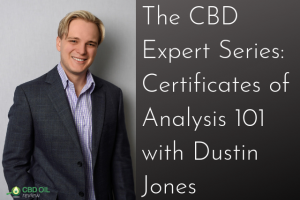
The CBD Expert Series: Jackie Bowen on Mislabeled & Misleading CBD Oil
Read More
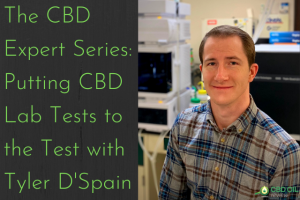
The CBD Expert Series: Putting CBD Lab Tests to the Test with Tyler D'Spain
Read More

MasterChef Nick Nappi's CBD Apple Cider Donut Hole Recipe
Read More
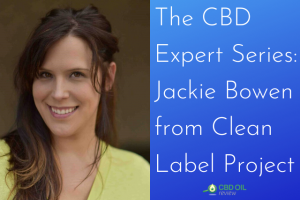
The CBD Expert Series: Jackie Bowen from Clean Label Project
Read More

The CBD Expert Series: Certificates of Analysis 101 with Dustin Jones
Read More
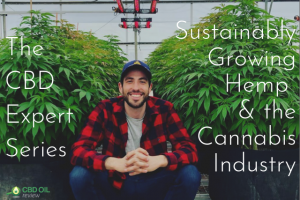
The CBD Expert Series: Sustainably Growing Hemp & the Cannabis Industry
Read More
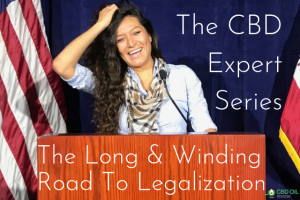
The CBD Expert Series: The Long & Winding Road To Legalization
Read More
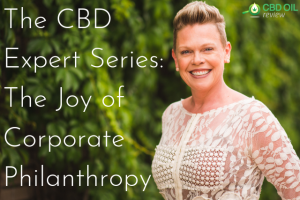
The CBD Expert Series: The Joy of Corporate Philanthropy
Read More
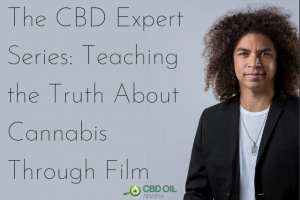
The CBD Expert Series: Teaching the Truth About Cannabis Through Film
Read More
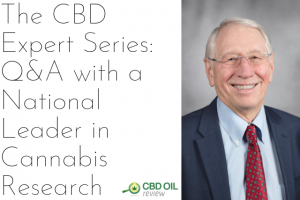
The CBD Expert Series: Q&A with a National Leader in Cannabis Research
Read More

The CBD Expert Series: Sexual Health and Pleasure with Sex Educator Kiana Reeves
Read More
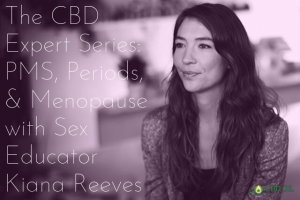
The CBD Expert Series: PMS, Periods, & Menopause with Sex Educator Kiana Reeves
Read More
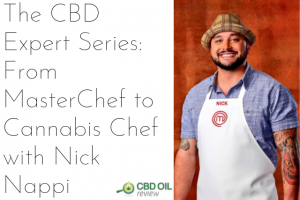
The CBD Expert Series: From Masterchef to Cannabis Chef with Nick Nappi
Read More
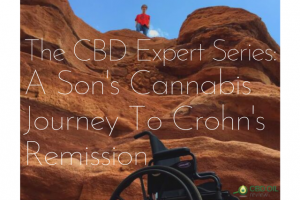
The CBD Expert Series: A Son's Cannabis Journey To Crohn's Remission
Read More
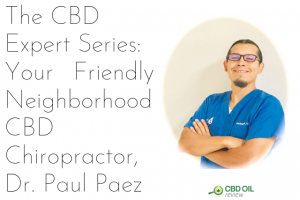
The CBD Expert Series: Your Friendly Neighborhood CBD Chiropractor, Dr. Paul Paez
Read More
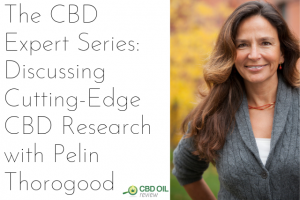
The CBD Expert Series: Discussing Cutting-Edge CBD Research with Pelin Thorogood
Read More
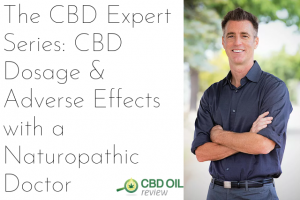
The CBD Expert Series: CBD Dosage & Adverse Effects with a Naturopathic Doctor
Read More

The CBD Expert Series: Talking Drug Tests with a Lab Tech
Read More
Opinions expressed in this article are those of our guest (the interviewee) and not necessarily of CBD Oil Review.
6 Smart Questions to Ask BEFORE You Buy CBD
Get the Ultimate CBD Buyer’s Guide and you won’t look at CBD the same way again!
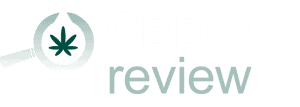


 search
search